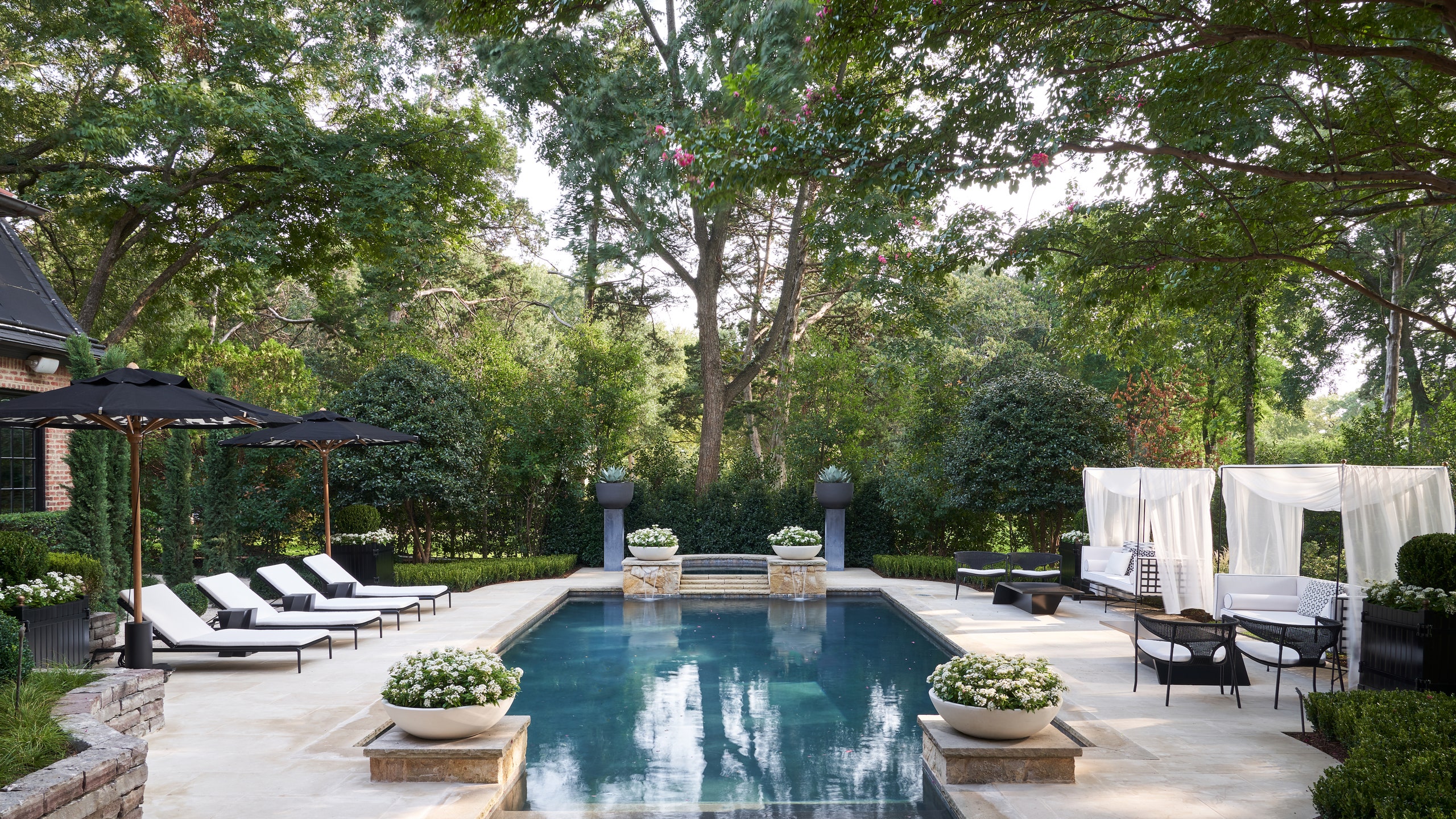If you’re a new homeowner dreaming about overhauling your outdoor space, or want to spruce up your backyard but haven’t had time, maybe you’re ready to hire a landscape designer. Like an interior designer, a landscape designer or landscape architect has the knowledge, training, and resources to help you realize your vision for a space or, if you need some inspiration, guide you towards one. “I can walk into a space and tell you 10 different things you can do in 10 different ways, and that’s really what you’re is paying for—after learning from people’s mistakes over the years, we know what works, what materials we should use, what’s going to last, and what native plants are going to work, so there’s no guesswork,” says Kristin Monji, founder and principal at Birch and Basil Design in New York City. Monji also adds that working with a landscape designer or landscape architect is a worthwhile investment when you decide to put your home on the market (think curb appeal). “You’ll absolutely get that money back when you sell your place,” she adds.
Another thing to consider: Because environmental conditions are changing as extreme heat and drought alternate with heavy rainy seasons, it’s especially important to have a pro in your corner when you’re planning and executing a landscape architecture project. “Hiring a licensed, trained professional who is well-versed in drought-tolerant planting, sustainable irrigation and drainage methods, and best practices for fire prevention is key in today’s changing world,” says Patricia Benner, founder and principal at Benner Landscape Design in Los Angeles.
We asked Monji, Benner, and other landscape designers and landscape architects for their best tips in finding the right person to transform an outdoor space.
What’s the difference between a landscape architect and a landscape designer?
Although many people use the terms “landscape architect” and “landscape designer” interchangeably, there are some differences. Landscape architects, who often work on larger commercial projects, must have at least a bachelor’s degree and state license, and they’re trained to deal with tricky construction issues such as elevation and slope issues, retaining walls, irrigation, drainage, and big-picture concerns such as driveways and parking areas. Landscape designers can often have similar credentials and experience, but aren’t required to have the state license.
How can I find a landscape designer or landscape architect?
Google and Instagram are certainly useful tools as you begin your search, but it’s worth doing some additional legwork as well.
In addition to searching online, Monji suggests asking friends or neighbors for suggestions, and meeting with at least three potential landscape designers or landscape architects. The experts you interview should be willing to pass on the names of former clients who can act as references. “Someone may have a certain style that their work will speak to and that may be your thing, but if you meet with three designers and talk to their past clients, you can say, ‘Oh this person is legit and they can do the work I am looking for,’” says Monji. If you’ve recently remodeled your home, your interior designer may have suggestions as well. “We get a lot of referrals through architects and interior designers, or people’s friends use us, and they see our work around town or they follow us on Instagram, so it’s usually someone who keeps popping up on the periphery,” says Dan Houchard, co-owner of From the Ground Up Landscape in Dallas. If you’re new to your area and don’t know many people yet, you can also ask the staff at your local nursery for recommendations.
Both the Association of Professional Landscape Designers (APLD) and the American Society of Landscape Architects (ASLA) have search tools that can help connect you with experts in your region. Both organizations require members to have a certain amount of educational and professional experience and also expect them to follow a code of ethics.
This helpful tool, which was created by AD editors, is an open-access list of AD-approved architects, interior designers, and importantly, landscape specialists. Homeowners or anyone seeking design talent can search the online platform by profession and location to find the perfect horticulture professional and hire a landscape designer for their next project.
How can I prepare for the initial consultation?
Once you’ve scheduled your initial interview—which will hopefully be in person so the landscape designer can scope out your outdoor space—it’s time to prepare.
You’ll want to come with a set of questions, but keep in mind that the designer or architect should be curious about you too. “It is equally important that the designer also asks good questions. This is a sign that your designer is in tune with you and is listening to your needs. They should want to get to know you, your lifestyle, and family, as well as how you live and entertain and how you want to use your property and outdoor spaces,” says Melissa Gerstle, founder and principal at Melissa Gerstle Design in Dallas.
Below is a list of questions you’ll want to ask them:
